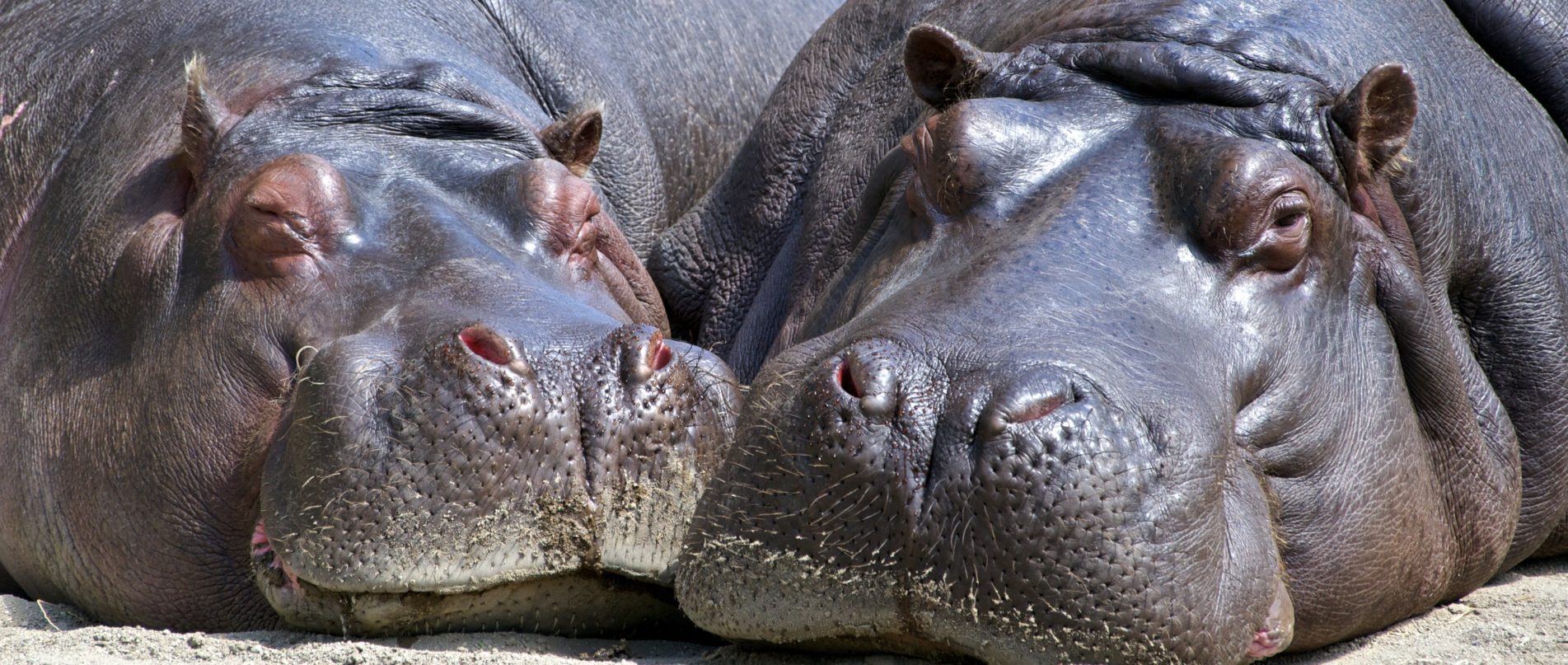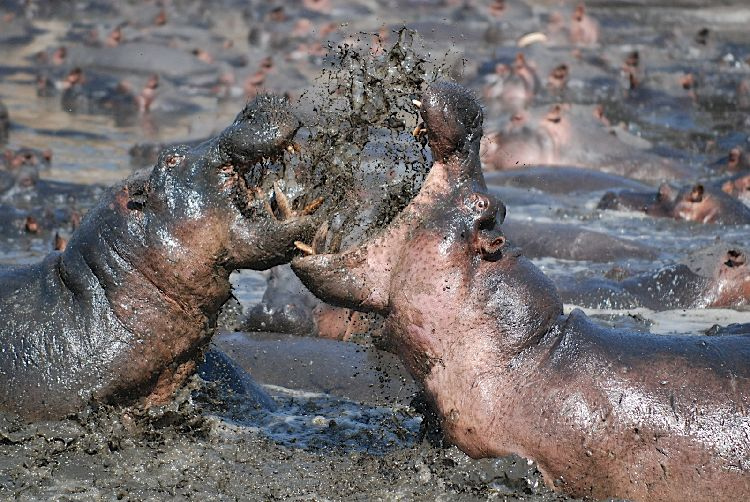
Prompt Images
In the late 18th century, the Count George-Louis Leclerc Buffon fired a metaphorical shot across the Atlantic when he proposed his Theory of American Degeneracy. Writing in 1766 in his Historie naturelle, with the condescension fitting of a French aristocrat with four different names and a title of nobility, Buffon noted that:
In America, therefore, animated Nature is weaker, less active, and more circumscribed in the variety of her productions; for we perceive, from the enumeration of the American animals, that the numbers of species is not only fewer, but that, in general, all the animals are much smaller than those of the Old Continent. No American animal can be compared with the elephant, the rhinoceros, the hippopotamus, the dromedary, the camelopard, the buffalo, the lion, the tiger.
Did you get all that? In America, as compared to the Old World (Europe, Asia, and Africa), Nature is weaker. All the animals are much smaller. No American animal can compare with the dromedary, the camelopard, the rhino, and so on. To which an astute reader might respond: what the hell is a dromedary? Or a Camelopard? (Fair questions. The dromedary is an Arabian Camel. And, disappointingly, the camelopard is not a camel-leopard monsterbeast, but apparently old-timey speak for giraffe.)

It gets worse.
Buffon went further though than just stating that America’s fauna were inferior. He gave reasons for the degeneracy. He believed the root problem was that America was too hot and swampy. We had poor air.
It gets better, he also wrote:
In these melancholy regions, Nature remains concealed under her old garments, and never exhibits herself in fresh attire; being neither cherished nor cultivated by man, she never opens her fruitful and beneficent womb.
Because what late 18th century writing on zoology would be complete without some misogynistic overtones?
Tell me those “Freedom Fries” aren’t sounding a little more enticing right now.
The American Response
Well, Thomas Jefferson, for one, didn’t take Buffon’s smack talking lightly. He apparently went on a multi-decade quest to catalogue America’s largest animals so that he’d have data to present to Buffon, proving, without a doubt, that America was no degenerate. In the end, the most impressive species he could put forward was the American moose.
Now a moose is no slouch. Moose can be from 5 to 7 feet tall and weigh between 400 to 1,000 pounds — nothing to scoff at. A moose is certainly a more badass animal than a dromedary. But the rest of that list?
Is anyone seriously going to say that if they were playing a game of moose vs. rhino that they’d pick the moose? Is there anyone who might study the armored car on legs with a lance for a nose and think, you know what might beat that guy? Bullwinkle.
Like it or not, America’s contender was the moose. And sure, we have bison. I also have to assume Jefferson didn’t realize that America was also home to grizzly bears, because everyone knows that grizzly bears trump moose. But even a grizzly bear looks a little lacking compared to most of the animals on Buffon’s list.
Do any American animals compare in majesty to an elephant, a rhino, a lion, a tiger, or a hippo? Yes, we do have our own “lions”, I suppose – but there’s no way an American Mountain Lion (Cougar, Panther, etc.) can live up to the title “King of the Jungle.” At best, the Americanized beast would qualify as “King of the Hill.”
What Could Have Happened
Here’s the thing. It didn’t have to be this way. We had a chance, a hundred or so years ago, to change our fate as the continent where you’d least like to safari. There’s no easy way to say this, so I’ll just come right out with it: We could have had hippos. And I’m not talking about the domesticated ones we have in a few zoos. I’m talking about wild, free roaming hippos. I’m talking about, Oh Give Me a Home, Where the Hippopotamuses Roam.
This was a thing that almost happened. And more amazing than the fact that it almost happened is the fact that almost no one knows that it almost happened.
The Meat Shortage
Let me set the scene for you. In the first decade of the 20th century, America found itself with a looming meat shortage. The population was exploding and there just weren’t enough cows to go around. Faced with this conundrum, Jon Mooallem, the author of American Hippopotamus*, writes that newspapers started referring to this serious issue as “The Meat Question.” As in, where are we going to find new sources of meat to feed everyone?
The answer to The Meat Question was, of course, hippos. The idea was to transplant a bunch of Hippos from Africa to the swamps of Louisiana. They’d live off the fat of the swampy land that no other large animal deemed suitable and America would have its new source of meat.
Mooallem writes that “apparently, the animals tasted pretty good, too, especially the fatty brisket part, which could be cured into a delicacy that a supportive New York Times editorial was calling, euphemistically, ‘lake cow bacon.’”
And lest you think this was just a bunch of sensationalist stories ginned up to sell more papers, this proposal had already made its way to Washington. The House of Representatives commissioned a report titled, “Why and How to Place Hippopotamus in the Louisiana Lowlands.”
Just stop for a moment let that sink in. About a hundred years ago, there was an actual report, presumably written on government letterhead and everything, that had both Hippopotamus and Louisiana Lowlands in its title. A report that a bunch of old, powerful white guys sat around and read while scratching their beards.
The Hippo Bill
Then, in March of 1910, the House Committee on Agriculture met to discuss H.R. 23261. This bill would appropriate $250,000 for transporting new animals to America. No surprise the bulk of that was intended for hippos and thus, H.R. 23261 was more commonly referred to as the Hippo Bill.
How is this not the first fact that any child ever learns in a U.S. History class? In 1910, the U.S. Congress was getting ready to vote on the Hippo Bill. Anyone want to guess what that bill was about?
Here’s the other thing, Mooallem talks about how hyacinths had been brought to New Orleans in 1884, before the Hippo Bill had even been considered. These flowers were popular and proliferated quickly. By the turn of the century the hyacinths had become a plague—filling streams and rivers so as to overrun fish (and fishermen) and block shipping routes.
Well, coincidentally, it turns out that hippopotamuses were quite keen on eating plants like hyacinths. So bringing hippos to Louisiana could simultaneously take care of two acute problems: a lack of meat and an overabundance of that rascally hyacinth.
The Size, Power, and Ferocity of a Hippo
And of course, there was the simple majesty and power of the thing. If you could only choose one animal to transport out of Africa and into the bayou, you could do much worse than the hippopotamus. If you are into size – and who are we kidding, America, we all are—hippos are the third largest land animals after elephants and rhinos. Remember that moose that maxed out at around 1,000 pounds? The average male hippopotamus weighs 3,300 pounds.
What about temperament? If you look up a hippos temperament online, the two most frequent words you will find are: aggressive and unpredictable. And don’t let their husky bodies fool you. Hippos can run up to 19 mph. (The one thing they can’t do is jump, so should you ever find yourself face to face with a hippo, run behind the biggest log you can find and pray.) Hippos attack unprovoked, and not even for food. They’re vegetarians. They’re just straight mean. All this is to say that if Hippos are the most badass animal in Africa, you can be damn sure they’d have been the most badass animal in America.

Hippos: The OG Beast Mode
In short, rhinos and lions and tigers and even Marshawn Lynch have nothing on the hippo in terms of sheer beastliness. If America at the turn of the century had built an army of hippos to march along the swamps of the south, it could have finally rid itself of the lingering questions regarding Buffon’s American Degeneracy.
So what happened? Did we ever get any hippos? Not a one. Not even a loaner hippo. Why not? Mooallem writes that “the idea was never exactly defeated but seems merely to have evaporated unspectacularly over a very long period of time.” And we thought our Congress was dysfunctional. Universal Health Care is one thing, but if you can’t get a political consensus around transporting hippos to Louisiana to feed people, fix the ecosystem, and send a big metaphorical F-You to the French – honestly, you have no business being in government.
What If?
Certainly this has to be one of the greatest “What Ifs” in American History. Right up there with What if the British had defeated the rebels in 1776? and What if the South had won the Civil War? What if we’d brought herds of hippopotamuses to this great country of ours? Showered them with feasts of hyacinths and gorged ourselves on their fatty brisket parts?
Picture those bayous filled with gators and hippos and creepy old backwater folks. Imagine what it would be like to order an Egg McMuffin with the Lake Cow Bacon, please. Want to go on safari? No problem, you can drive there from anywhere in the lower 48!
We could have had hippos, but again, that legislation was defeated… what was the phrasing? Oh yes, unspectacularly. Which is precisely in step with the mood of the nation today. Washington, you robbed us of an America we can hardly imagine.
In that America, we wouldn’t be worried about Making America Great, Again. Because THAT America would be damn near perfect.
* By the way, American Hippopotamus is easily one of the best things I’ve ever read. It was published as a feature in The Atavist Magazine – but don’t let that fool you; it’s incredibly long. Like a book. But worth every damn word. The story is also about much more than hippos.


